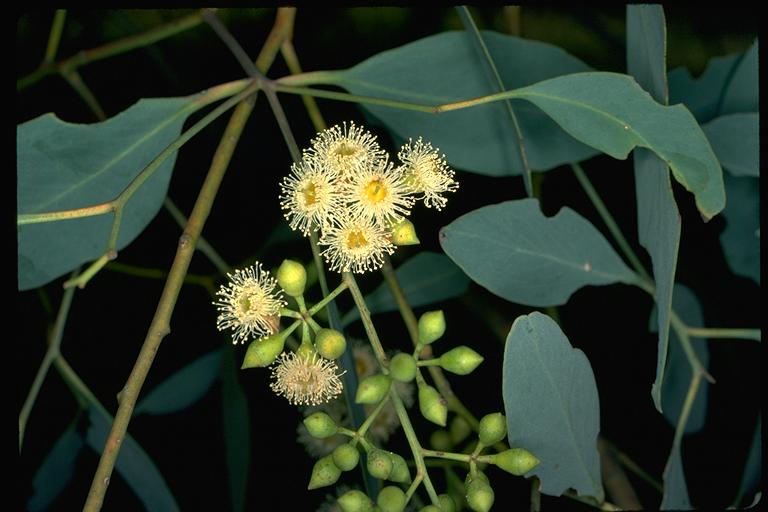Eucalyptus Intertexta on:
[Wikipedia]
[Google]
[Amazon]
''Eucalyptus intertexta'', commonly known as inland red box, western red box, gum coolibah or the bastard coolibah, is a species of tree that is 

endemic
Endemism is the state of a species being found in a single defined geographic location, such as an island, state, nation, country or other defined zone; organisms that are indigenous to a place are not endemic to it if they are also found els ...
to central Australia. It has rough, fibrous or flaky bark on the base of the trunk, smooth white to brownish bark above, lance-shaped adult leaves, flower buds in groups of seven on the ends of branchlets, white flowers and cup-shaped to hemispherical fruit.

Description
''Eucalyptus intertexta'' is a tree, rarely a mallee that typically grows to a height and forms alignotuber
A lignotuber is a woody swelling of the root crown possessed by some plants as a protection against destruction of the plant stem, such as by fire. Other woody plants may develop basal burls as a similar survival strategy, often as a response t ...
. It has rough fibrous or flaky bark on the base of the trunk, sometimes on its full length, smooth white to grey or brownish bark above. Young plants and coppice
Coppicing is a traditional method of woodland management which exploits the capacity of many species of trees to put out new shoots from their stump or roots if cut down. In a coppiced wood, which is called a copse, young tree stems are repea ...
regrowth have dull greyish or glaucous
''Glaucous'' (, ) is used to describe the pale grey or bluish-green appearance of the surfaces of some plants, as well as in the names of birds, such as the glaucous gull (''Larus hyperboreus''), glaucous-winged gull (''Larus glaucescens''), g ...
leaves that are lance-shaped, long and wide. Adult leaves are the same bluish green or greyish green on both sides, lance-shaped, long and wide on a petiole long. The flower buds are arranged on the ends of branchlets on a branching peduncle Peduncle may refer to:
*Peduncle (botany), a stalk supporting an inflorescence, which is the part of the shoot of seed plants where flowers are formed
*Peduncle (anatomy), a stem, through which a mass of tissue is attached to a body
**Peduncle (art ...
long, each branch of the peduncle having buds in groups of seven, the buds on pedicels
In botany, a pedicel is a stem that attaches a single flower to the inflorescence. Such inflorescences are described as ''pedicellate''.
Description
Pedicel refers to a structure connecting a single flower to its inflorescence. In the absenc ...
long. Mature buds are oval, long and wide with a conical operculum. Flowering occurs in most months and the flowers are white. The fruit is a woody, cup-shaped to hemispherical capsule long and wide with the valves enclosed in the fruit.
Taxonomy and naming
''Eucalyptus intertexta'' was first formally described in 1900 by Richard Thomas Baker in ''Proceedings of the Linnean Society of New South Wales
The Linnean Society of New South Wales promotes ''the Cultivation and Study of the Science of Natural History in all its Branches'' and was founded in Sydney, New South Wales (Australia) in 1874 and incorporated in 1884.
History
The Society succ ...
''. The specific epithet
In taxonomy, binomial nomenclature ("two-term naming system"), also called nomenclature ("two-name naming system") or binary nomenclature, is a formal system of naming species of living things by giving each a name composed of two parts, bot ...
(''intertexta'') is from Latin words meaning 'between' and 'tissue', referring to the inter-woven bark fibres.
Distribution and habitat
The inland red box grows in woodland and open woodland in the central deserts of Western Australia, the Northern Territory, and South Australia, extending into western parts of New South Wales, southern Queensland and eastern South Australia.References
{{Taxonbar, from=Q7212840 intertexta Myrtales of Australia Flora of New South Wales Flora of Queensland Flora of South Australia Flora of the Northern Territory Eucalypts of Western Australia Plants described in 1900 Trees of Australia Taxa named by Richard Thomas Baker